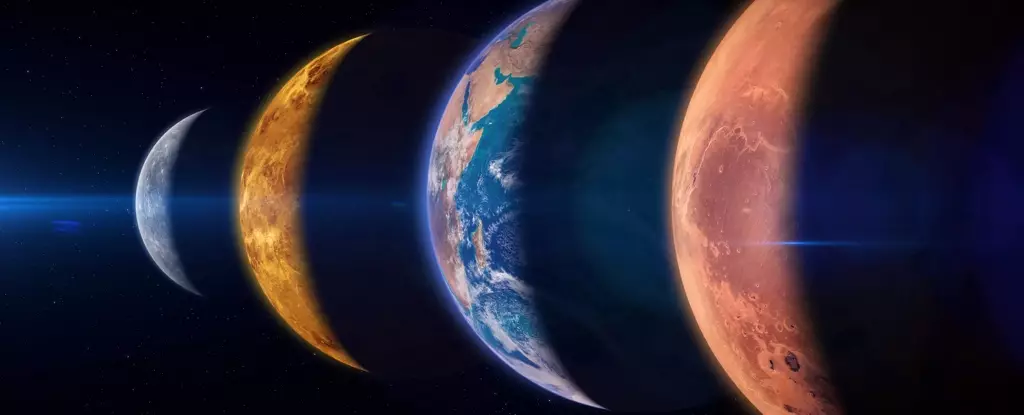Mark your calendars for an extraordinary event that will unfold in the night sky on February 28, 2025. A cosmic tableau featuring all seven of the Solar System’s planets—Mercury, Venus, Mars, Jupiter, Saturn, Uranus, and Neptune—will manifest in a spectacular alignment. This phenomenon, often referred to as a “great planetary alignment,” symbolizes a moment of wonder for both casual stargazers and seasoned astronomers alike. While alignments happen periodically, witnessing all seven planets arranged within a narrow span of the sky occurs exceedingly rarely, creating a captivating occasion that shouldn’t be missed.
The Mechanics of Planetary Alignments
Much like a carefully choreographed dance, planetary alignments depend on the movements of celestial bodies as they orbit our Sun. All the planets move in what astronomers call the ecliptic plane—a flat, imaginary plane through which most planets travel during their circular paths. Unlike artistic depictions that suggest planets line up perfectly like beads on a string, the actual arrangement in the night sky is less regimented. Instead, planets will be seen strewn across a segment of the horizon, a distance apart yet still within close enough proximity to create a stunning visual spectacle.
The occurrences of planetary alignments can be classified into different categories based on the number of planets involved. While gatherings of five or six are relatively commonplace, an alignment that includes seven planets is a rare astrological event promising a spectacular showcase. Such occurrences illuminate the cosmic dance that governs our Solar System, reminding us of the harmony and intricacies of celestial mechanics.
Geographical Observations
The visibility of this planetary alignment will vary based on your geographical location on Earth. For enthusiasts eager to witness this sight, understanding the specific timing and spatial arrangements of the planets is imperative. Observational tools have become increasingly accessible in this digital age. Websites such as Time and Date offer interactive interfaces where users can input their locations and find precise rise and set times for the planets, along with their celestial positions.
Additionally, software like Stellarium provides users with a simulated version of the sky, illustrating the arrangements of celestial bodies during the event. Mobile applications such as Sky Tonight utilize smartphone hardware to offer real-time tracking of these luminaries, increasing the chances for everyone to engage with this astronomical spectacle. Ensuring that you are well-prepared with these tools will greatly enhance your experience on the anticipated evening.
To fully appreciate the grandeur of this planetary alignment, some preparation is crucial. Though some planets may be visible to the naked eye, having a good pair of binoculars or a telescope can significantly enrich your viewing experience, allowing for detailed observations of these distant worlds. Engaging with this event involves more than merely stepping outside; it also requires strategic planning for optimal viewing conditions.
As mundane as it may seem, the weather plays a pivotal role in the observation. Clear, dark skies free of light pollution will yield the most impressive sights. Therefore, scouting locations away from urban illumination—perhaps a remote area or higher elevation—could make a notable difference. Anyone with an interest in astronomy or simply an appreciation for natural wonders should start planning their evening of February 28 now, keeping a close watch on forecasts as the date approaches.
Events like the seven-planet alignment serve not merely as beautiful celestial displays but also as important moments of reflection on our place within the Universe. They remind observers of the vast distances that separate them from these planets while also emphasizing the interconnectedness of the Solar System’s bodies. Such phenomena ignite curiosity about our astronomical surroundings and encourage a deeper engagement with science and exploration.
The grand planetary alignment of February 2025 promises to be a remarkable event, one filled with wonder and inspiration. Whether you are an amateur astronomer or simply someone seeking a breathtaking view, mark this rare opportunity on your calendar, prepare your gear, and hope for clear skies come that enchanting evening.


Leave a Reply